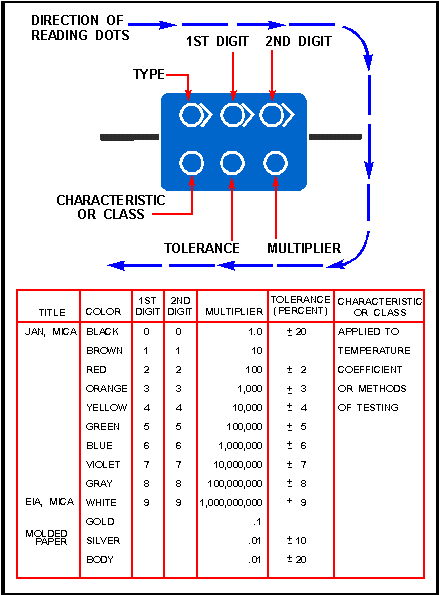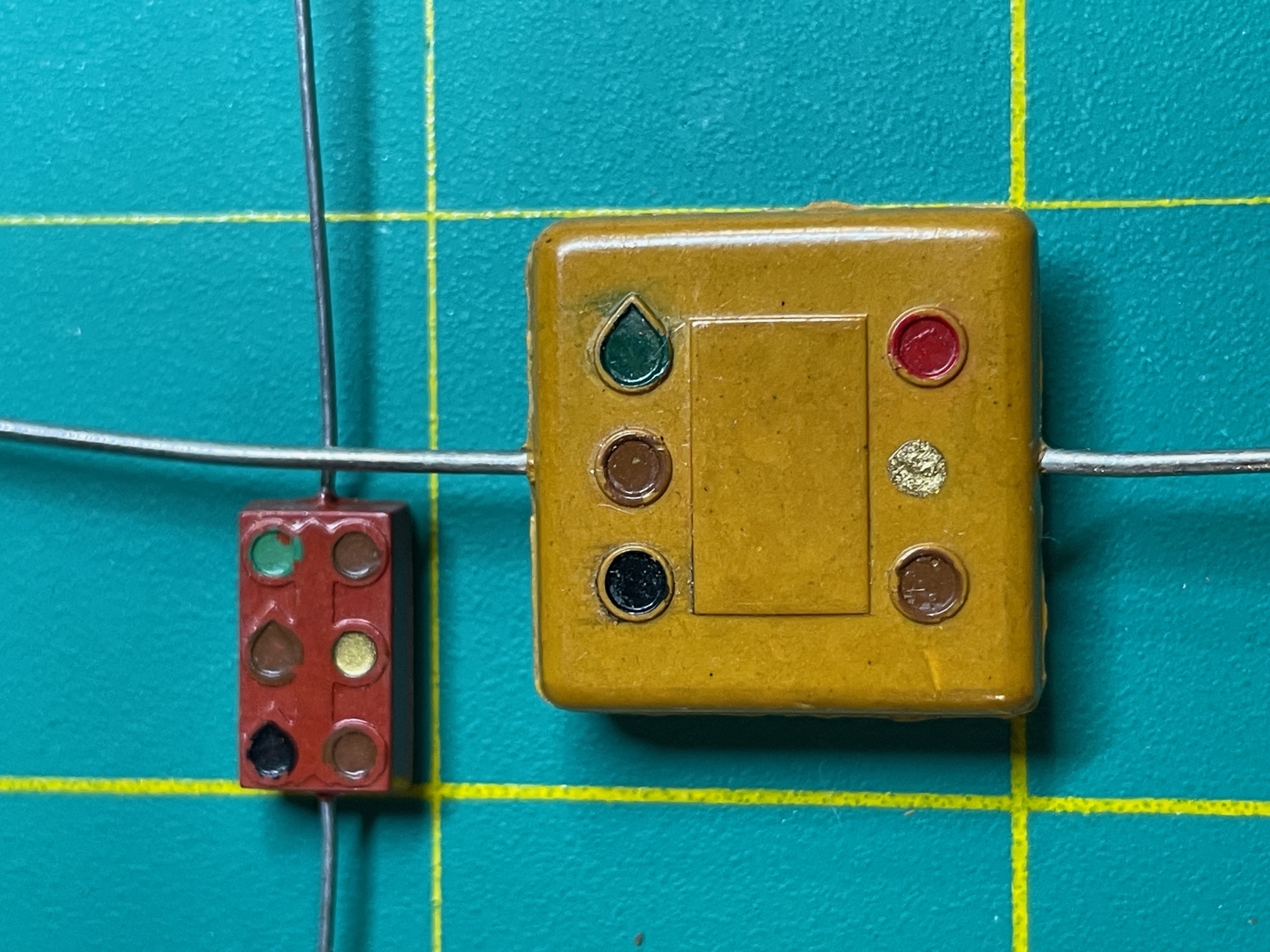10-04-2023, 10:01 PM
Aerovox would often apply the EIA 6 dot code to 3-dot bodies 

Thus the upper left is white for EIA, the 2nd dot has fallen away and should be brown, the third is as seen, green, the forth or multiplier is also brown but could be red, deteriorated, the fifth though important is if black 20%..
I have been reviewing a 25# box of new 30's era mica caps (yes, thousands of mica caps). Most are very accurate but some appear to be coded as if to fulfill a required quantity. None the less release agents if not removed from the body will cause the paint dots to fall away.
This cap will effect the calibration in the center of the band, so its value needs to be roughly 10% of stated, it should also have a negative co-efficient, generally N330.
FWIW take a look again at setup to read the value on your Eico bridge... The fact that the bridge gives a null, indicates the cap does not have excessive leakage. I have found that accumulated dirt stuck to the body of the molded mica cap contributes to leakage as read by some instruments... Sometimes the multiplication factor on the scale control knob becomes confusing, bad enough that the dots are too...
I keep a couple of known good marked caps that are in the center, more or less of each range, sanity check near my bridges...

Note how much smaller the 150pf is over the 1500pf and the examples were for JAN production... Note too, the black first dot on JAN coding, more often than not, will be a cap that more likely has retained it value.
Do not substitute any other kind of cap in this location, though a tubular ceramic may work..
Chas
Thus the upper left is white for EIA, the 2nd dot has fallen away and should be brown, the third is as seen, green, the forth or multiplier is also brown but could be red, deteriorated, the fifth though important is if black 20%..
I have been reviewing a 25# box of new 30's era mica caps (yes, thousands of mica caps). Most are very accurate but some appear to be coded as if to fulfill a required quantity. None the less release agents if not removed from the body will cause the paint dots to fall away.
This cap will effect the calibration in the center of the band, so its value needs to be roughly 10% of stated, it should also have a negative co-efficient, generally N330.
FWIW take a look again at setup to read the value on your Eico bridge... The fact that the bridge gives a null, indicates the cap does not have excessive leakage. I have found that accumulated dirt stuck to the body of the molded mica cap contributes to leakage as read by some instruments... Sometimes the multiplication factor on the scale control knob becomes confusing, bad enough that the dots are too...
I keep a couple of known good marked caps that are in the center, more or less of each range, sanity check near my bridges...
Note how much smaller the 150pf is over the 1500pf and the examples were for JAN production... Note too, the black first dot on JAN coding, more often than not, will be a cap that more likely has retained it value.
Do not substitute any other kind of cap in this location, though a tubular ceramic may work..
Chas
Pliny the younger
“nihil novum nihil varium nihil quod non semel spectasse sufficiat”



